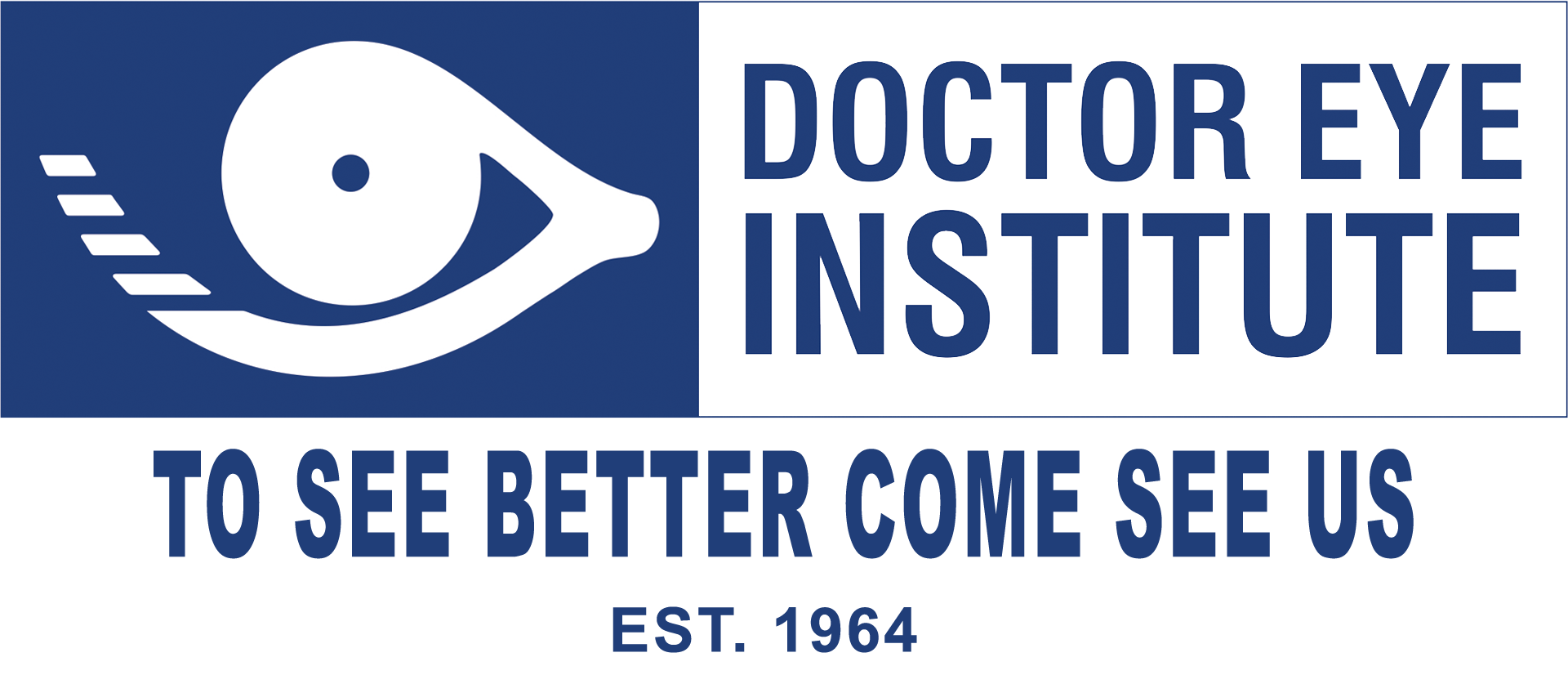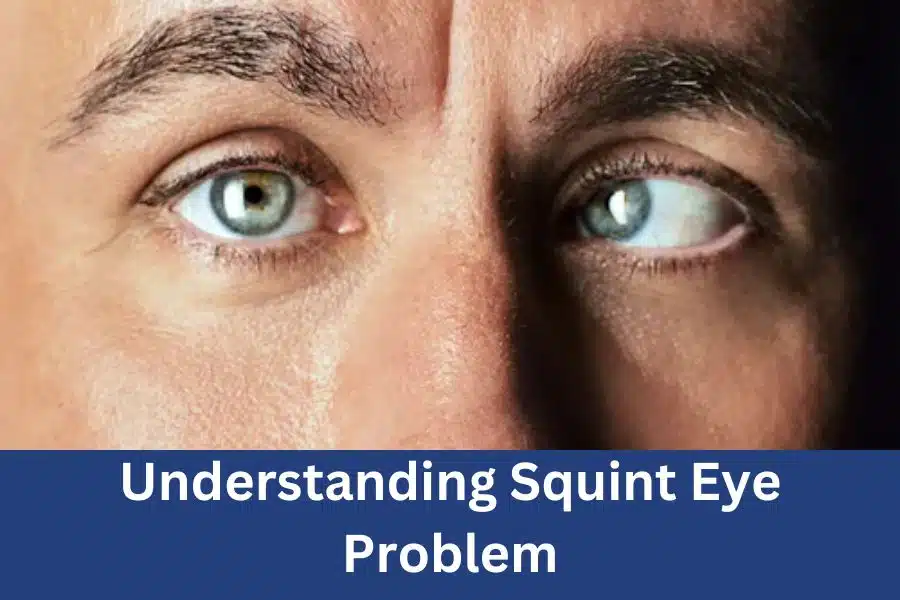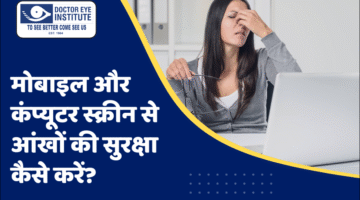Understanding Squint Eye Problem: Causes, Identification, Treatment & Costs
Do you often find yourself looking at your non-aligned eyes in the mirror? Do you think it is just a birth defect and cannot be treated?
The chances are you are a victim to squint eye. Strabismus or squint eye is a condition where the eyes do not align properly. Such misalignment can cause one or both eyes to turn inward, outward, upward, or downward. It affects people of all ages, from infants to adults, and can have various causes and treatments.
Let’s learn how to identify squint eye, treatment options available, and the costs one needs to incur in the following section.
Reasons you have a squint eye
- Genetic Predisposition: A significant factor contributing to squint eye is genetic inheritance. If you were born into a family with a history of misalignment of eyes, you are likely to develop the condition due to inherited genetics.
- Muscle Imbalance: You may develop a squint eye due to the imbalance in the muscles controlling your eye movement. The imbalance can arise from various factors, including physical injury to the eye area, nerve damage affecting muscle function, or structural abnormalities within the eye itself.
- Neurological Influences: Squint eye can also be triggered by neurological conditions impacting your brain’s control over eye movements. Conditions like cerebral palsy or disorders affecting the brain’s coordination abilities can interfere with the alignment of the eyes, leading to squinting.
How do you identify a squint eye?
Well, it takes more than a mere glimpse in the mirror to identify a squint eye. Let’s check some of the indicators here:
- Symptomatic Indicators: The top symptoms of a squint eye are double vision, noticeable misalignment of eyes, or a perception that eyes are crossing inward or outward.
- Consultation with an Ophthalmologist: When you notice any of the symptoms of a squint eye, you should immediately consult an ophthalmologist. Upon an initial examination, the expert shall assess your eye alignment, visual acuity, and other underlying causes contributing to the misalignment of your eyes.
- Diagnostic Procedures: To confirm your case of a squint eye, your eye specialist will run a range of diagnostic tests. The tests can include evaluations of visual acuity, cover tests to assess eye alignment, and imaging studies such as MRI or CT scans. These imaging techniques help evaluate both the structures of the eye and the neurological processes governing eye movement, aiding in the determination of an appropriate treatment plan.
How can you reduce your squint eye?
As you diagnose your eye condition, you should work on enhancing your eye alignment and vision. You can achieve this with the help of an experienced eye specialist. Some strategies that you can try by yourself are:
- Vision Therapy: Your eye specialist may suggest vision therapy that includes a structured plan of activities and exercises to improve your eye condition. The activities help to refine eye coordination and bolster the strength of ocular muscles. Vision therapy is considered the best for children with a squint eye and the therapy rectifies eye misalignments to enhance visual acuity.
- Eye Exercises: Different eye exercises help you refine your eye coordination and focus. The exercises include the tracking of moving objects, alternating between near and distant objects, and engaging in convergence exercises to realign eyes.
- Corrective Lenses: Your eye specialist shall suggest you use prescriptive eyeglasses or contact lenses to rectify any refractive errors. By offering clear vision, corrective lenses reduce ocular strain and promote proper alignment.
Does squint eye increase with age?
Generally, a squint eye develops during childhood but there is a likelihood that the condition may aggravate with growing age. Factors influencing the progression of a squint eye during adulthood are:
- Age-Related Effects on Squint Eye: As we age, alterations in ocular muscles and tissues lose their ability to sustain optimal eye alignment. Additionally, other age-related ocular conditions, such as macular degeneration or cataracts worsen the case.
- Complications and Risks: If you have been neglecting squint eye for a long time, it will complicate your eye condition. Negligence may lead to more ocular problems, such as persistent diplopia, diminished depth perception, and an increased vulnerability to accidents.
How can you treat squint eye?
Non-Surgical Approaches
During the initial stages of your condition, your ophthalmologist shall try to rectify the squint eye with the help of non-surgical approaches Here are some of them:
- Corrective Lenses: Optometrists may prescribe glasses or contact lenses to rectify refractive errors, which can contribute to the occurrence of squint eye.
- Eye Patching: Occlusion therapy, involving the covering of the stronger eye to stimulate the weaker one, proves beneficial, especially in cases of amblyopia (commonly referred to as lazy eye).
- Vision Therapy: Your specialist will recommend exercises and activities designed to enhance eye coordination and focusing abilities, especially if you are also struggling with convergence insufficiency.
Surgical Alternatives
If you are at a stage where non-surgical procedures do not work, the ophthalmologist will resort to surgical procedures. Here are the surgical options open for you:
- Adjustment of Eye Muscles: Ophthalmologists perform strabismus surgery, wherein specific eye muscles are either tightened or loosened to enhance eye alignment.
- Botulinum Toxin Injections: In certain cases, injections of botulinum toxin are administered to temporarily weaken particular eye muscles, thereby facilitating improved alignment.
- Adjustable Suture Techniques: Advanced surgical methods involve the use of adjustable sutures, enabling precise adjustments to eye muscle positioning post-surgery.
Rehabilitation and Continued Care
Whether you go for surgical or non-surgical procedures, continuous rehabilitation, and care are required to completely rectify the squint eye. Some of the methods include:
- Post-Operative Monitoring: Consistent follow-up appointments with the ophthalmologist are essential to monitor healing progress and ensure sustained eye alignment.
- Visual Therapy: Continued engagement in vision therapy exercises is vital to uphold and reinforce binocular vision and eye coordination.
- Long-Term Management: Depending on the individual’s condition, periodic monitoring and potential adjustments to treatment may be necessary to address any recurrence or emerging issues.
What is the cost of the squint eye surgery?
Influential Cost Factors
Numerous factors determine the cost of a squint eye surgery, such as:
- Procedure Type: The specific surgical technique influences the overall cost.
- Surgeon’s Expertise: Fees charged by surgeons vary based on their level of experience, reputation, and geographical location.
- Hospital or Facility Fees: Costs including the surgical facility, such as operating room fees and anesthesia expenses, contribute to the overall financial outlay.
- Pre- and Post-Operative Care: Consultations, diagnostic assessments, and subsequent follow-up appointments augment the total expenditure.
Additionally, in the context of India, the cost of such surgeries varies according to local standards and practices.
Average Expenses Across Different Regions
Average expenses associated with squint eye surgery show disparity across diverse geographical regions and healthcare systems. For instance:
- Conversely, in regions with universal healthcare systems or relatively lower healthcare expenses, such as certain parts of Europe or Asia, the financial burden is less while ensuring comparable quality of care.
- India: In India, the average cost of squint eye surgery is notably lower compared to developed countries due to lower healthcare costs and currency exchange rates.
Insurance Considerations
Many health insurance plans extend coverage for squint eye surgery, particularly when it is deemed medically essential. However, coverage policies vary among insurance providers and may necessitate pre-authorization or documentation of functional impairment.
Patients should liaise with their respective insurance companies to ascertain the extent of coverage and any potential out-of-pocket expenses they might incur.
Closing Reflections
As Dreye, a leading eye surgeon brand located in Mumbai dedicated to enhancing vision and eye health, we recognize the significance of addressing squint eye. It is a common eye condition that impacts individuals across all age groups, potentially affecting their quality of life and visual acuity. While squint eye may not always be entirely curable, early detection coupled with appropriate treatment can significantly mitigate its severity and improve eye alignment. Our all-inclusive approach to managing squint eye includes various treatment modalities, such as vision therapy, targeted eye exercises, prescription of corrective lenses, and surgical intervention when required.
We suggest our patients with squint eyes for regular eye examinations because timely detection of vision changes or eye alignment is instrumental for managing the condition. By educating patients about the causes, identification methods, available treatment options, and associated costs of squint eye, we empower them to take proactive measures in managing the condition and safeguarding their eye health for the long term. At Dreye, our commitment lies in providing personalized care and innovative solutions to help individuals achieve optimal visual outcomes and enhance their overall well-being.
FAQs: Frequently Asked Questions
Q1. Is squint eye only a cosmetic concern?
A. While squint eye can affect appearance, it’s more than just a cosmetic issue. Uncorrected squinting can lead to:
- Double vision: Seeing two images of the same object.
- Lazy eye (amblyopia): Decreased vision in one eye due to the brain favoring the stronger eye.
- Poor depth perception: Difficulty judging distances.
- Eye strain and headaches.
Q2. Can adults develop squint eye?
A. Yes, squint eye can develop in adults. While it’s more common in children, adults can experience squinting due to:
- Medical conditions: Stroke, head injury, or certain neurological disorders.
- Eye injury: Trauma to the eye muscles or nerves.
- Uncorrected refractive errors: Nearsightedness, farsightedness, or astigmatism.
Q3. How long does squint eye surgery take?
A. Strabismus surgery is typically an outpatient procedure lasting 30-60 minutes. Recovery time varies but usually involves some discomfort for a few days.
Q4. Are there any risks associated with squint eye surgery?
A. As with any surgery, there are potential risks like infection or bleeding. However, eye surgery is generally considered safe when performed by a qualified ophthalmologist.









